Lebkuchen
A Medieval Taste Great for the Outdoors
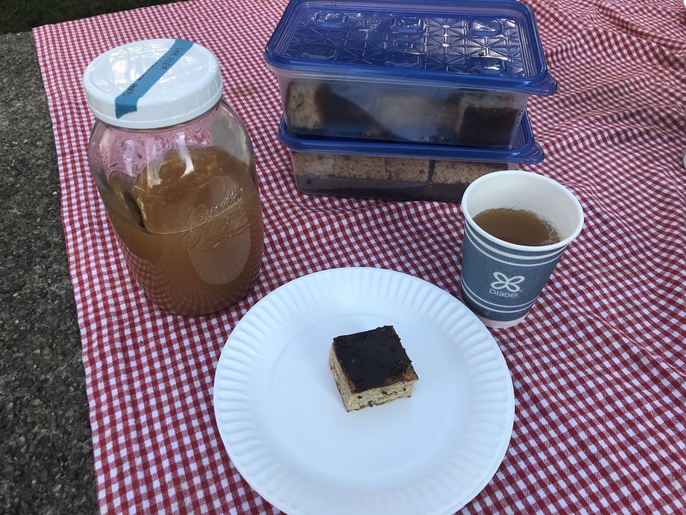
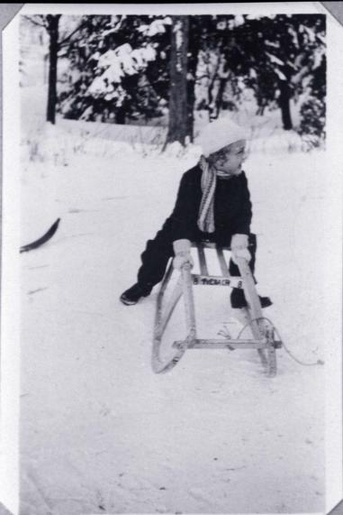
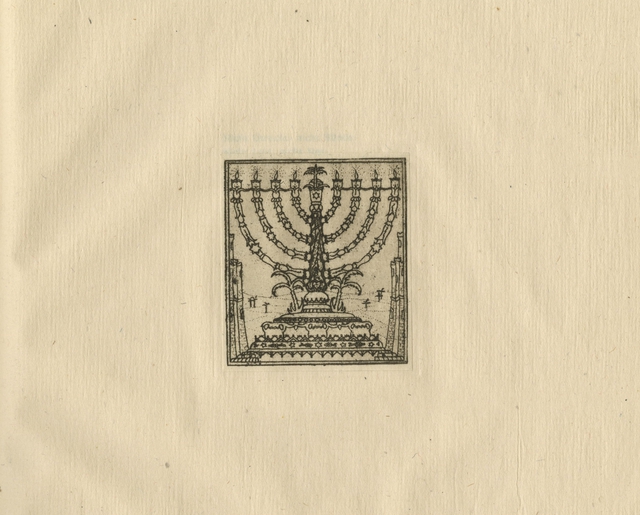
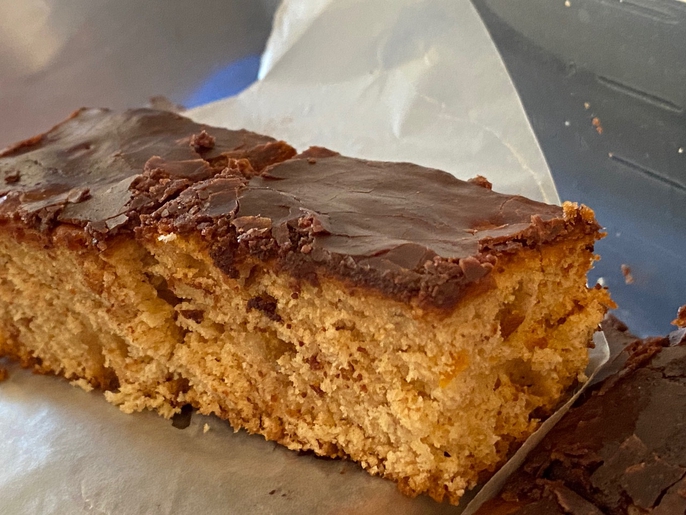
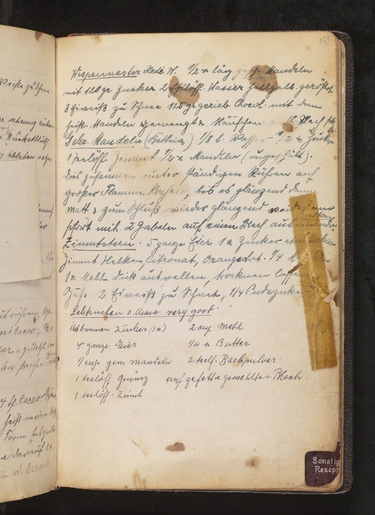
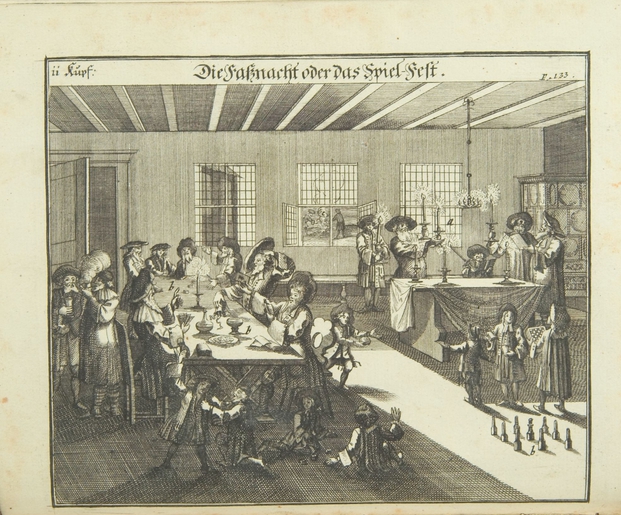
One of my memories of the Christmas season in Germany is of eating Lebkuchen, a honey cake that always seemed to me to have a very medieval taste, probably from its combination of candied orange peels and gingerbread spices. Although more commonly associated with Christmas, I was surprised to find Lebkuchen in German-Jewish cookbooks.
Not surprisingly, Lebkuchen have historical roots in Medieval Europe, when they were first eaten as Lekach, a type of honey cake that was brought through trade routes to Central and Eastern Europe by Italian Jews. Honey cakes were the primary treat for feasts in Medieval Europe. Overtime, these rudimentary honey cakes were tinkered with, adding ground nut flour, candied citrus peel and, most importantly, spices like cinnamon and cloves to make a type of gingerbread. One important factor about Lebkuchen was that they could be stored for many weeks, which is said to have improved its flavor. For German Jews, Lebkuchen were good for Sukkot, because they were often made with fruit and nuts, foods symbolic of the harvest; they were good for Rosh Hashanah because of the honey; and Jews ate Lebkuchen on Hanukkah, during which time it was popular Christmas treat in Germany.
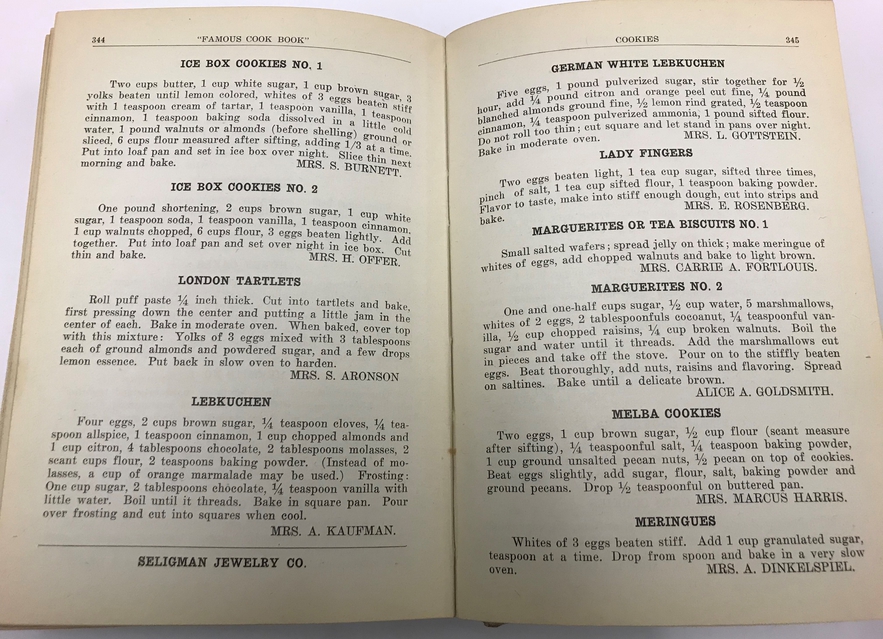
Lebkuchen can be traced to the United States in cookbooks, following German and German-Jewish immigration. In 19th century America, most Jewish migration came from German lands, which can be inferred by the strong German influence in American-Jewish cookbooks. Jewish cookbooks published around the turn-of-the-century, like the The Ladies' Auxiliary to Temple de Hirsch Famous Cook Book and the The Settlement Cook Book (Milwaukee, 1901), have Lebkuchen and other German recipes; as does the Praktisches Kochbuch für die Deutschen in Amerika by Henriette Davidis, a non-Jewish cookbook for Germans in America.
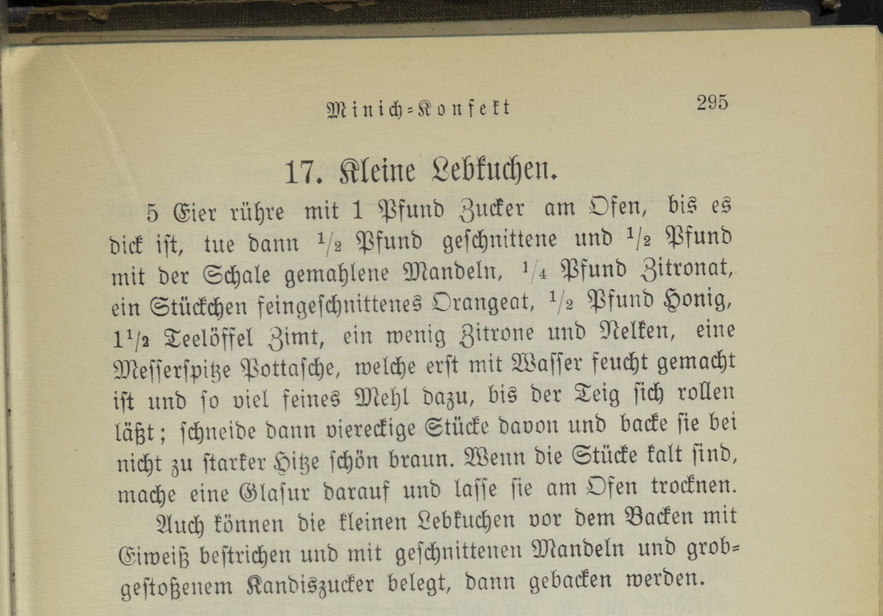
Lebkuchen recipes have roughly the same combination of ingredients: gingerbread spices like cinnamon and cloves, and sometimes ginger and nutmeg; a citrus taste from candied oranges and lemons, or zest; nut flour, usually almond or hazelnut; and honey. Some Lebkuchen are placed on Oblaten, thin wafers that can be traced back to the medieval period when monks used communion wafers to keep the dough from sticking. After baking, the Lebkuchen are glazed, either with a white sugar or chocolate. It is interesting to note the differences between German recipes and American recipes. For example, American Lebkuchen recipes sometimes replaced honey with molasses or brown sugar. Or American recipes used walnuts instead of almonds.
Here is a recipe of Lebkuchen from 6th edition of Bertha Gumprich's Vollständiges praktisches Kochbuch für die jüdische Küche:
5 eggs beaten with 1 pound of sugar on the oven, until it is thick, add then 1/2 pound sliced and half a pound of almonds ground with the shells, 1/4 pound of candied lemon peel and a piece of fine cut candied orange peel, 1/2 a pound of honey and a teaspoon of cinnamon with a little lemon and cloves, a knife-tip of potash which has first been dampened with water, and as much fine flour, until the dough lets itself be rolled; then cut four-cornered pieces from it and bake them in a not too strong heat until they are beautifully brown. When the cakes are cool, make a glaze on it and let it dry in the oven. You can also brush the small Lebkuchen with egg whites before baking and cover with sliced almonds and rough cut and sugar, and then bake.
You can try this recipe from Bertha Gumprich, or you can do like I did and use the Lebkuchen recipe in Mimi Sheraton's well-known The German cookbook. Her Nürnberger Lebkuchen (Nuremberg honey spice cakes) use ground almonds, cinnamon and cloves, candied citron, and pound of honey, which gives them that medieval taste. I chose to add a chocolate glaze instead of a white sugar glaze because I like chocolate.
First, I prepared chopped candied orange peels.
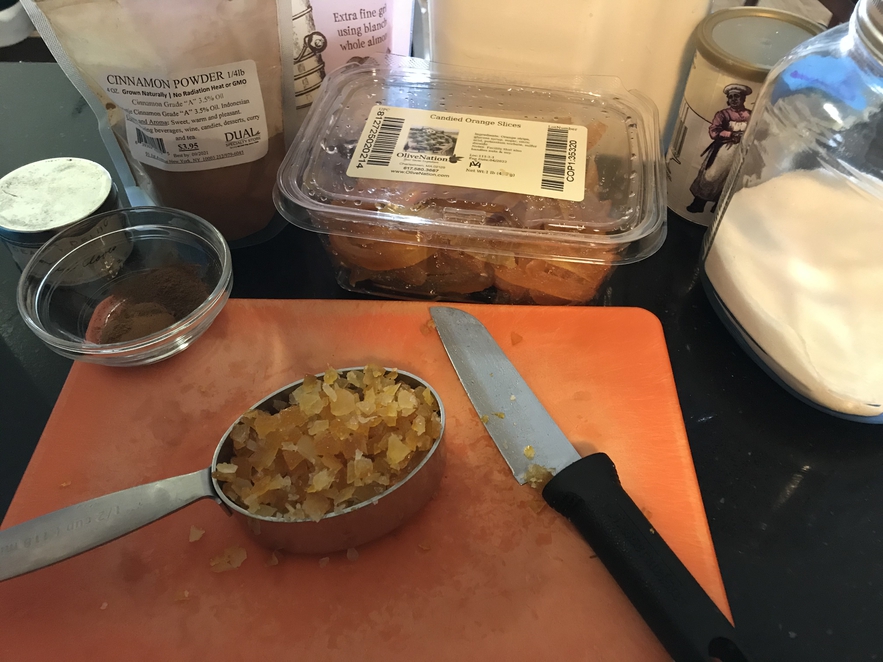
I then beat eggs with the sugar until the mixture was thick, similar to Gumprich's recipe.
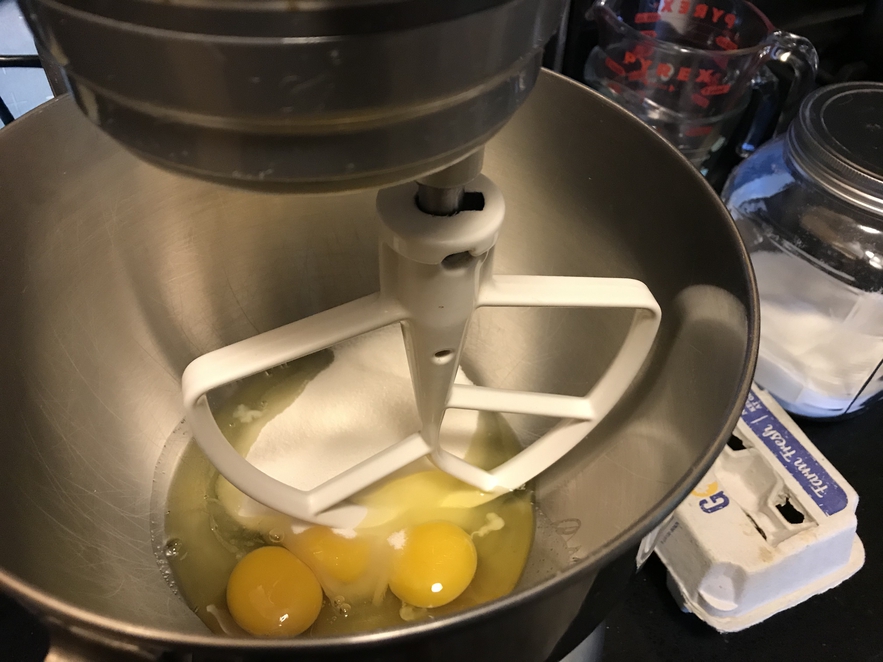
I added a pound of honey. Sheraton's recipe also calls for milk or strong black coffee, an interesting ingredient not found in 19th century recipes. The coffee would give the mixture a darker color (and probably a richer flavor). But I chose to add milk so that I could share these cookies with small children.
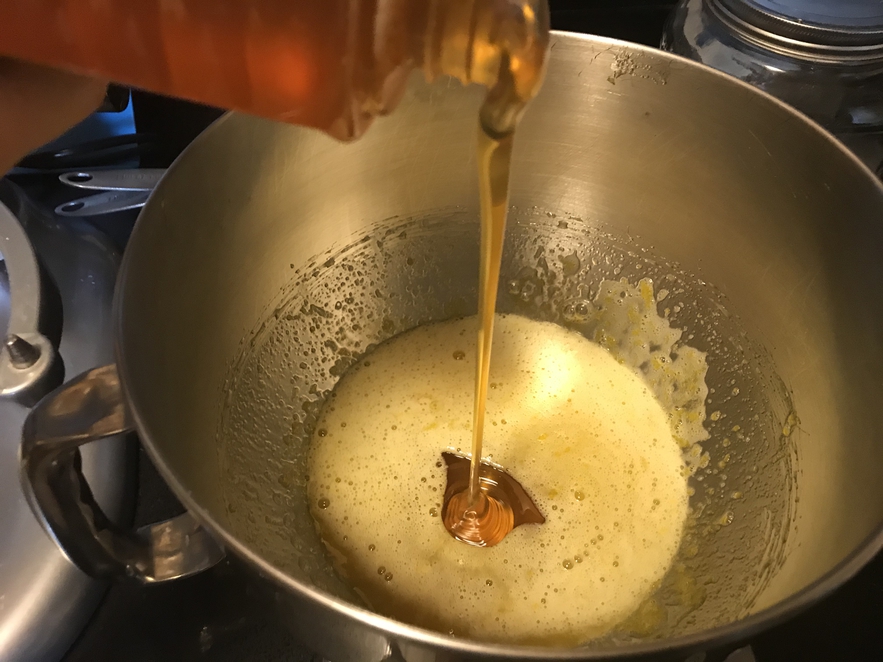
I added spices, ground nuts and flour, and then mixed well. Once mixed, I poured the mixture into a backing sheet. The tricky part is using the right sized pan so that the mixture cooks well and has the good texture when finished.
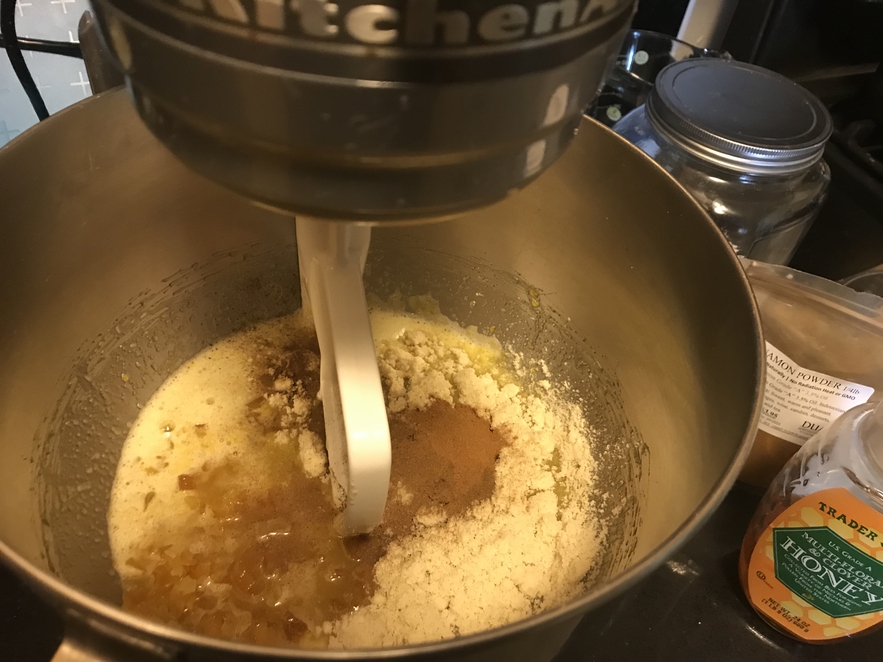
Once the mixture was in the oven, I prepared the glaze with chocolate and vanilla. And why not add a schluck of brandy!
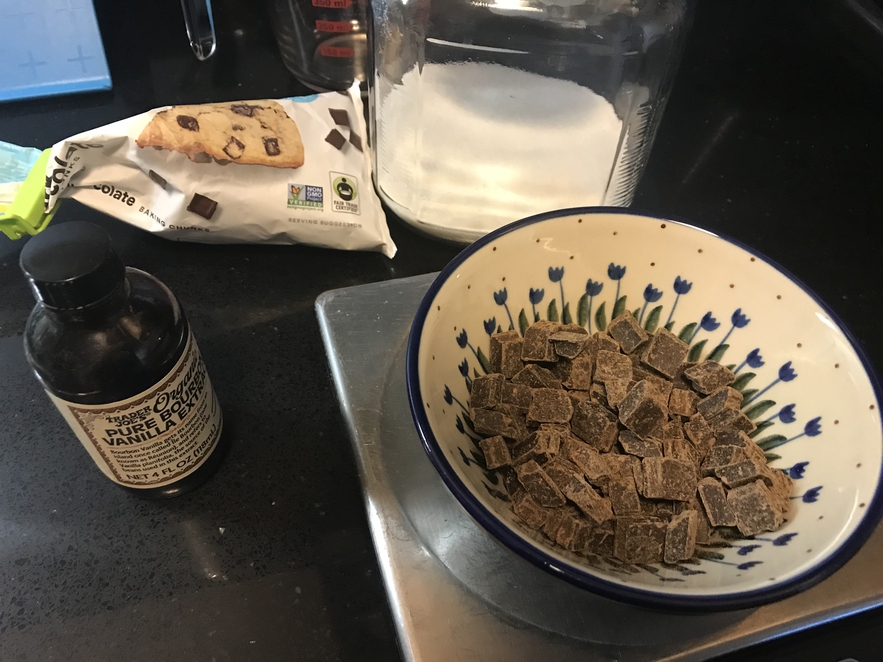
I cooked the glaze on a double boiler. It smelled delicious.
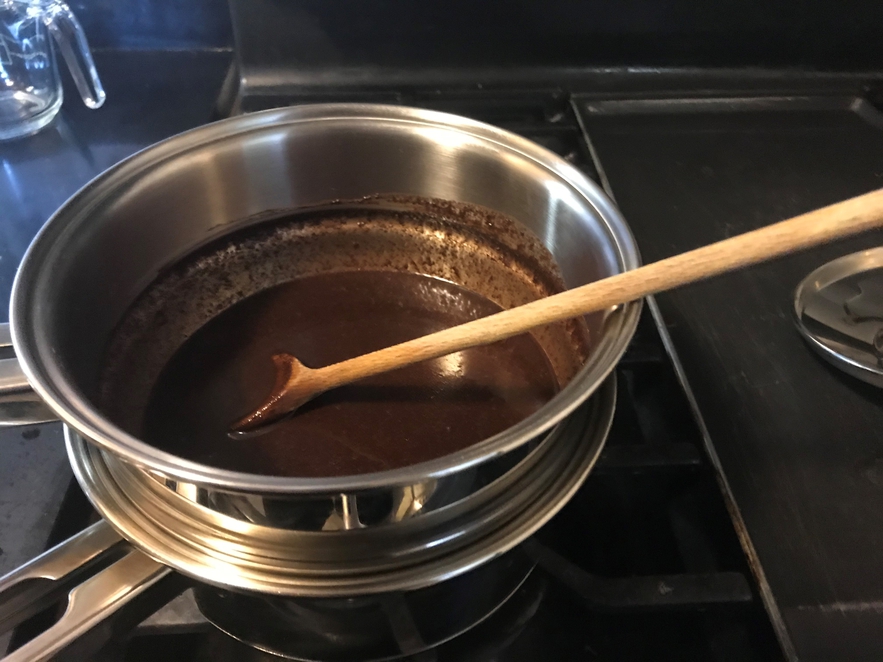
Almost as soon as the glaze was ready, I pulled the Lebkuchen. It was a gorgeous golden brown color.
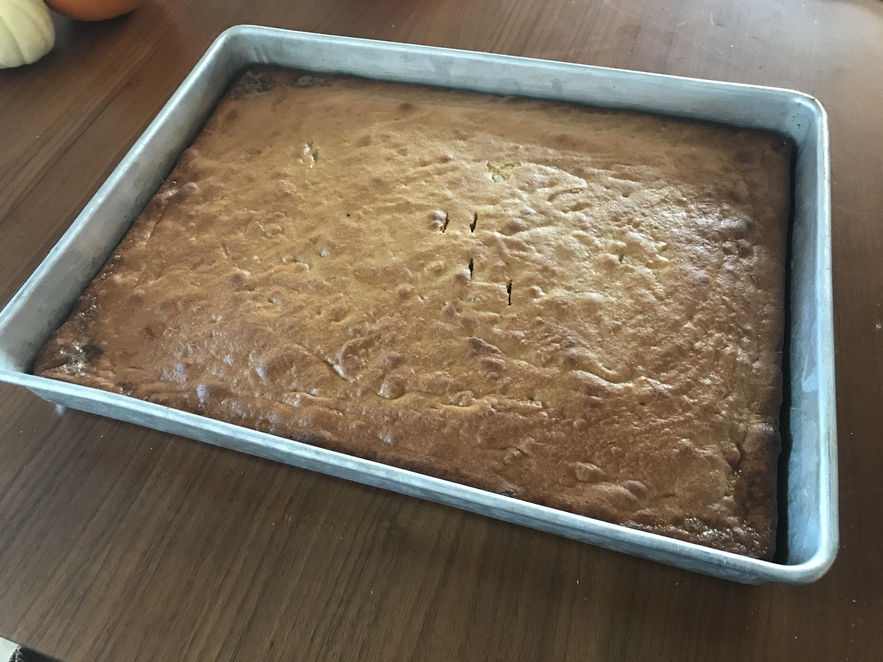
Finally, I spread the glaze over the Lebkuchen, and then let it sit in a warm oven to get a nice sheen.
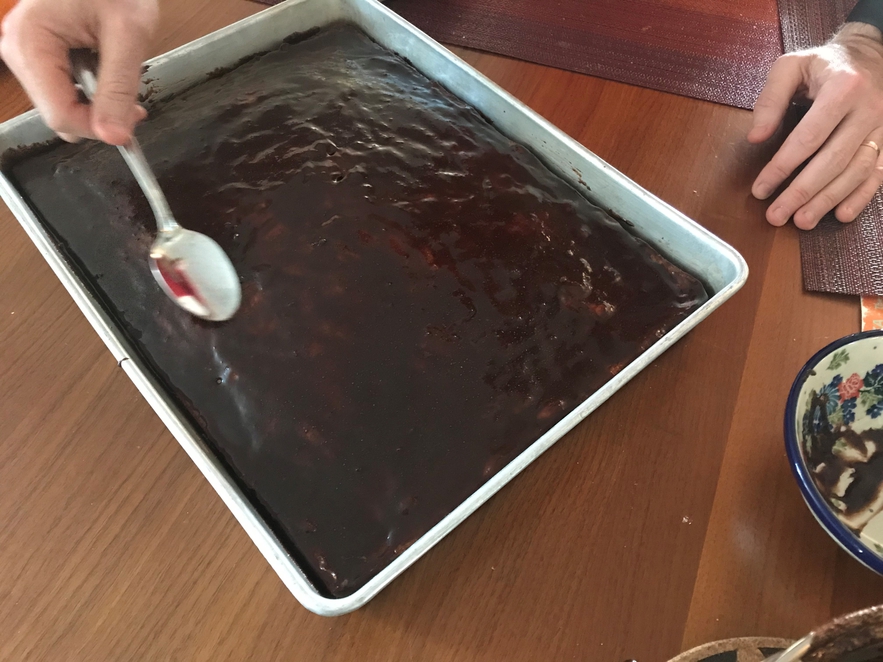
Once sliced, the final Lebkuchen were more like cake bars than cookies. Most Lebkuchen I remember eating in Germany were a little dry and austere, but these freshly baked Lebkuchen received high praise for their moistness and mellow citrus taste. We took these Lebkuchen outside for a socially distanced holiday un-gathering (while wearing masks) and enjoyed them with hot cider (and a little brandy!). One last added note is that these Lebkuchen also stored well in the freezer and tasted good even weeks later after being warmed up in the microwave.
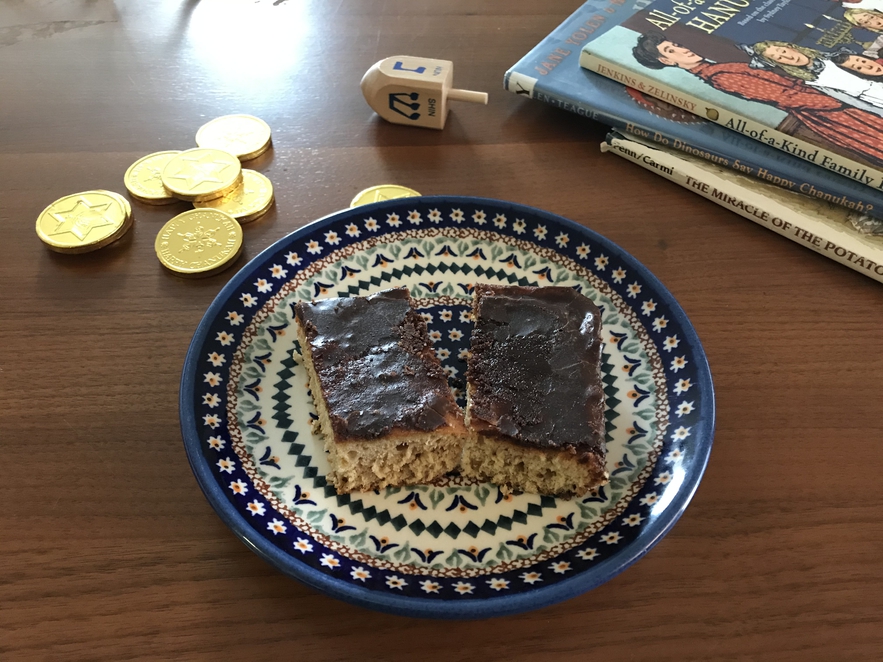
Bibliography:
Cooper, John. Eat and Be Satisfied : a Social History of Jewish Food. Northvale, New Jersey : Jason Aronson, 1983.
Marks, Gil. Encyclopedia of Jewish Food. Hoboken : Wiley, 2010.
Rodin, Claudia. The Book of Jewish Food : an Odyssey from Samarkand to New York. New York : Alfred A. Knopf, 1997.
Sheraton, Mimi. The German cookbook: a complete guide to mastering authentic German cooking. New York: Random House, 2010. Overdrive electronic edition viewed December 15, 2020.